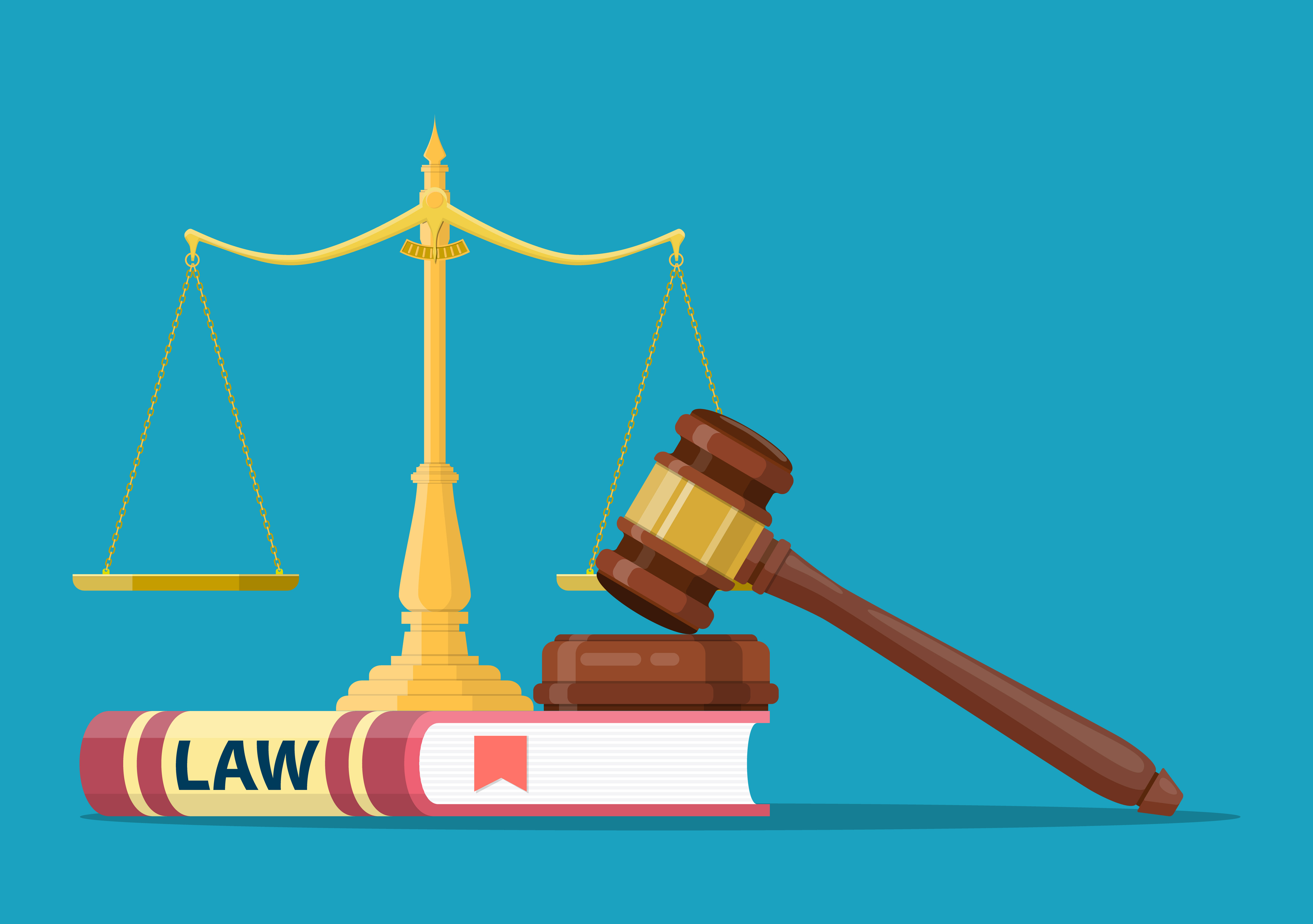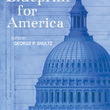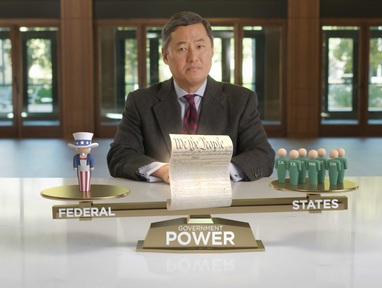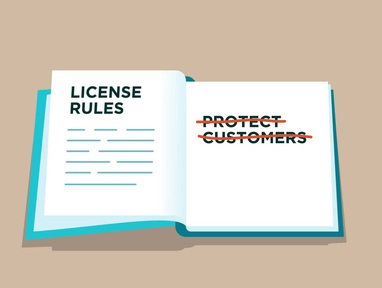Fixing the Way We Regulate
 As the world responds to the coronavirus pandemic, policy makers are desperate to expand testing and increase capacity at our nation’s hospitals. To that end, state and federal authorities have granted waivers freeing laboratories, hospitals, and medical providers from certain regulations. The federal government has relaxed the lengthy approval process for laboratory testing of the virus. State-specific medical licensing rules have been suspended. Policy makers have rightfully concluded that rules that were intended to protect Americans are actually hurting the nation.
As the world responds to the coronavirus pandemic, policy makers are desperate to expand testing and increase capacity at our nation’s hospitals. To that end, state and federal authorities have granted waivers freeing laboratories, hospitals, and medical providers from certain regulations. The federal government has relaxed the lengthy approval process for laboratory testing of the virus. State-specific medical licensing rules have been suspended. Policy makers have rightfully concluded that rules that were intended to protect Americans are actually hurting the nation.
Health care is not the only industry where regulations often do more harm than good. From state and local policies on housing and labor rules to federal environment and banking laws, misguided regulations can hurt the economy, reduce opportunities for workers, and limit choices for consumers.
Are there better ways to regulate?
How do regulations affect the economy?
We all want a clean environment, healthy workplaces, and safe consumer goods. State and federal regulations are supposed to accomplish just that.
Regulations govern how businesses operate, the goods and services they may sell, and the relationships they have with their employees. Nearly every law passed by Congress requires new regulations. And, over time, regulators respond to political or economic changes with new rules or modifications to existing ones. Hundreds of agencies, departments, and commissions are responsible for writing and enforcing these regulations.
For expansive new federal regulations (where the estimated annual costs exceed $100 million), agencies must show that the benefits exceed the costs. But despite the agencies’ best intentions, regulations can still have costly ramifications for our economy and our well-being. They likely add trillions of dollars to the cost of doing business each year. In Blueprint for America, economist Michael Boskin summarizes the economic costs of regulations:
While estimates of regulatory costs and benefits are less precise than those for direct spending and taxation, studies from think tanks and government agencies estimate the annual cost of regulation at well over a trillion dollars per year. In 2014, the Office of Management and Budget reported that the cost of just the small fraction of new rules enacted in the prior decade, with estimated annual costs over $100 million, was $100 billion a year. But that includes only a handful of the more than thirty thousand regulations the Office of Management and Budget (OMB) enumerates, and none of the costly, long-standing major regulations.
Compliance costs are an obvious expense associated with regulations. These costs affect business and consumers. In 2017, for example, the Department of Energy adopted enhanced energy-conservation requirements for ceiling fans. The department estimated that the regulation would increase consumer costs by $4.4 billion. Businesses also spend billions of dollars ensuring they have complied with many requirements. Banks, for instance, have large compliance departments to ensure they meet all regulations. As economist David Henderson explains, many of these costs fall disproportionately on small businesses:
One way that governments raise costs and hurt competition at the same time is with regulations that are proportionally a bigger burden on small companies than on large ones. A company with, say, $10 million in annual revenue, may need to hire a lawyer to help with compliance, whereas a company with $10 billion in revenue might need to hire only 10 lawyers. The ratio of lawyers to revenue for the small firm in the above example is 1 to $10 million whereas for the large firm it’s only 1 to $1 billion.
The cost of regulations, however, extends far beyond these direct costs. Regulations tend to stifle competition and innovation. Incumbent industries are better able to navigate the existing thicket of rules and regulations; new entrants are at a distinct disadvantage. We’ll never know exactly how many businesses and products were never created due to regulations, but we do know the costs are significant. As the video below shows, industries with little competition have higher prices, lower quality, and less innovation than more competitive industries.
How important to society is fixing the way we regulate? Henderson cites a recent study by the White House Council of Economic Advisers (CEA):
The fact is this: Of the 35 countries whose governments are members of the Organization for Economic Cooperation and Development, the United States has the ninth most restrictive regulations of product markets. Our regulations are slightly less restrictive than Latvia’s and slightly more restrictive than Sweden’s. The CEA estimated, based on these data, that if the United States deregulated to achieve the same degree of regulation as the Netherlands, which is the least regulated of the 35 OECD countries, U.S. GDP would increase by 2.2 percent over 10 years. If, instead, the United States settled for emulating Canada, U.S. real GDP would increase by 0.5 percent over 10 years.
Importantly, those economic gains do not require eliminating all regulations; rather, the gains result from merely improving the way the United States regulates.
Why do regulations fail?
Regulators don’t intend to harm society by their rule making. For expensive regulations (with expected costs greater than $100 million), regulators must perform cost-benefit analyses to verify that the regulation will be a net-benefit to society. Despite the best of intentions, however, many regulations still end up doing more harm than good. Why?
As we noted above, the indirect costs of regulations are hard to quantify. Regulators often overlook the effects their regulations will have on competition. This problem is exacerbated by the fact that regulators often work closely with existing companies when crafting regulations. The end result is that the final rules often benefit current businesses at the expense of new entrants. Economists call this “regulatory capture.” Watch this video to learn how regulatory capture works:
Rule makers are also not always objective when considering the costs and benefits of proposed rules. Michael Boskin explains:
Currently, most of the analysis of benefits and costs is conducted by the relevant regulatory agency proposing, designing, and overseeing the regulation—when that analysis is done at all. While that agency may have relevant expertise, it may also be captured by the firms it regulates, or its objectivity may be challenged, given its mission and/or political pressures.
Even if regulations initially pass a cost-benefit test, regulations are rarely reevaluated after they are implemented. They almost never come off the books—very few have sunset provisions. That is true even when the rules have unforeseen costs or when their promised benefits fail to materialize. The end result, as we explained in part 1, are millions of regulations that likely cost more than a trillion dollars each year but fail to deliver a commensurate amount of benefit.
How do regulations affect workers?
There are several federal agencies responsible for protecting workers. The Occupational Safety and Health Administration (OSHA) creates and enforces work safety rules. The National Labor Relations Board (NLRB) writes and enforces regulations governing collective-bargaining agreements and unfair labor practices. OSHA and NLRB are just two of hundreds of state and federal agencies responsible for workers’ rights and welfare.
While they purport to protect workers, these agencies have created innumerable rules that discourage businesses from hiring. Hoover Institution senior fellow Richard Epstein explains the damages these rules inflict on labor markets:
Labor markets are hobbled every day by ever-more-intrusive regulations and taxes, with two costly consequences. First, they reduce the opportunities for gains from trade between employers and employees. Quite simply, if the cost of regulatory or tax compliance exceeds the joint gains from the transaction, the deal is off. Second, these regulations add huge administrative expenses, both in the direct costs of government enforcement and in private compliance costs. We should never spend tax dollars to reduce productive activity.
State occupational rules serve as a glaring example of how regulations hurt workers. When lawmakers craft licensing rules, they typically point to the need to protect consumers. The video below, however, describes how these licensing rules are often more about protecting existing businesses from competition:
Unfortunately, occupational licensing rules have disproportionate effects on low-income workers. David Henderson notes that licensing rules prevent millions of workers from entering profitable industries. As a consequence, “those people are making less income than otherwise. And most are probably in the lower half of the income distribution. In short, occupational licensing almost certainly leads to higher income inequality.”
How do regulations affect our health?
Regulations can have bigger consequences than just weakening our economy or killing jobs; our health is even jeopardized by some of these rules.
Health regulations are supposed to ensure patients receive safe and high-quality care. No one wants unclean medical facilities or unsafe drugs prescribed to patients. But we often find regulations are more about preventing competition than protecting patients. For example, many states have “certificate of need” laws that require hospitals to obtain permission before they are allowed to expand. These laws are intended to keep healthcare costs from rising. In reality, they can prevent new hospitals from being built and competing with existing providers on the basis of price. The video below discusses how we can improve health care by removing these uncompetitive rules:
But it isn’t just regulatory capture that leads to bad health regulations. Regulators—particularly when it comes to health care—also tend to be risk averse. The Food and Drug Administration (FDA), for example, is notoriously slow in approving new drugs. The long drug-approval process reduces the probability that regulators approve a drug that is later found to be dangerous. But, this aversion to approving drugs can also have deadly consequences. David Henderson and the former director of the FDA’s Office of Biotechnology Henry Miller explain how:
The reputation of the FDA’s regulatory regimes as the gold standard might imply to some that FDA-approved products are the safest anywhere and that a ponderous, expensive regulatory regime is the price that must be paid for a high level of safety. However, that conviction hardly justifies a system that ignores the costs, both in money and lives lost, of inefficient, unnecessarily burdensome regulation. Public health is harmed when potentially beneficial products are delayed, abandoned, or never tested at all.
How do regulations affect consumers?
Even beyond health care, regulations often harm consumers. Regulations lead to higher prices and lower-quality goods and services. While it is impossible to highlight all the regulations that harm consumers, the housing crisis in many parts of America serves as a useful example.
An inadequate supply of housing makes it difficult for millions of American families to buy or even rent a home. In the video below, economist Lee Ohanian explains how the housing shortage is a consequence of government policies. Federal, state, and local regulations—from strict environment rules to restrictive zoning laws—have made it difficult to build more housing.
Like other regulations, land-use rules may have been written with good intentions. For example, zoning laws are intended to promote clean and safe neighborhoods. Over time, however, they have increasingly been used to stop all new development. That may be good for current homeowners who benefit from rising home prices, but as Ohanian explains, the economic and societal consequences of these regulations are dire. Individuals and families are, of course, made worse off when they can’t find affordable housing. Beyond the local effects, regulations that stifle development prevent workers from moving to where they can be the most productive. Ohanian has found that relaxing land-use rules could add trillions of dollars to the economy and expand economic opportunity for all.
How can we fix the way we regulate?
Fixing the way we regulate won’t be easy. Upon entering office, the Trump administration adopted several reforms that were intended to reduce the regulatory burden on businesses and families. For every new regulation, agencies were required to discontinue two regulations. In addition, each agency was required to keep the total cost of all the regulations they enact at or below zero. That meant that costly new regulations would have to be balanced by eliminating existing rules with equal or greater expected costs.
But much larger reforms are needed.
As government has expanded, regulators have assumed more power. This has created a large “administrative state” that is subject to minimal oversight and has little incentive to consider the costs it inflicts on society. The video below explains why reining in the administrative state is imperative in holding regulators accountable to the public.
As the video explains, reining in the administrative state will “require Congress to reassert its constitutional authority as the branch that defines the scope of power agencies are allowed to use.” Similarly, “Judges have to be more skeptical of an agency’s interpretation of laws—especially when the agency fails to consult with the individuals, businesses, and other stakeholders affected by its regulations.”
In addition, restoring federalism is important for improving the way we regulate. In the video below, John Yoo highlights the many ways federalism helps protect individual liberty and improve outcomes for Americans:
As discussed above, states and local governments are not immune from creating burdensome regulations. Unlike the federal government, however, state governments can tailor rules to fit the unique circumstances of each state. Moreover, state residents who object to the rules in their state can relocate elsewhere.
Beyond these significant reforms, the federal government should also improve its rule-making procedures. The video below explains the importance of changing the way regulators determine the costs and benefits of regulations.
As the video explains, cost-benefit analyses are best conducted by objective regulators who have not been captured by the very industries they regulate. Performing independent cost-benefit analyses on proposed and current regulations would better ensure the benefits from these rules continue to exceed their costs.
Conclusion
It is easy to assume that the good intentions that inspire regulations ensure that they are sensible and effective, but they often come with significant costs that regulators can easily overlook. The coronavirus pandemic has spurred policy makers to rewrite or overrule some of the burdensome regulations in healthcare industry. But the need to fix the way we regulate existed well before 2020, and it will undoubtedly be needed long after the current crisis subsides.
Sources and extra reading material
In our Policy Insights edition on the environment, we discuss better methods to protect the environment than heavy-handed government regulations. In the case of mitigating climate change, a broad-based carbon tax applied to all sources of carbon would encourage businesses and families to reduce their activities that emit carbon and would encourage entrepreneurs and innovators to find low-cost alternatives to fossil fuels.
The Regulation and Rule of Law Initiative at the Hoover Institution tries “to induce the large literature on regulation to be more conscious of incentives. Economic and legal scholars will use costs and outcomes of specific regulations to compile examples of the many special benefits of regulatory policy and document the circumvention of legislative intent.”
Just the Fracts critically explores current regulations on hydraulic fracturing and offers alternative regulations to protect the environment while promoting the industry.
In his chapter in Blueprint for America, economist John Cochrane explains why the Dodd-Frank act and related regulations will not prevent future financial crisis. He proposes a set of an alternative rules to avoid the next crisis.














